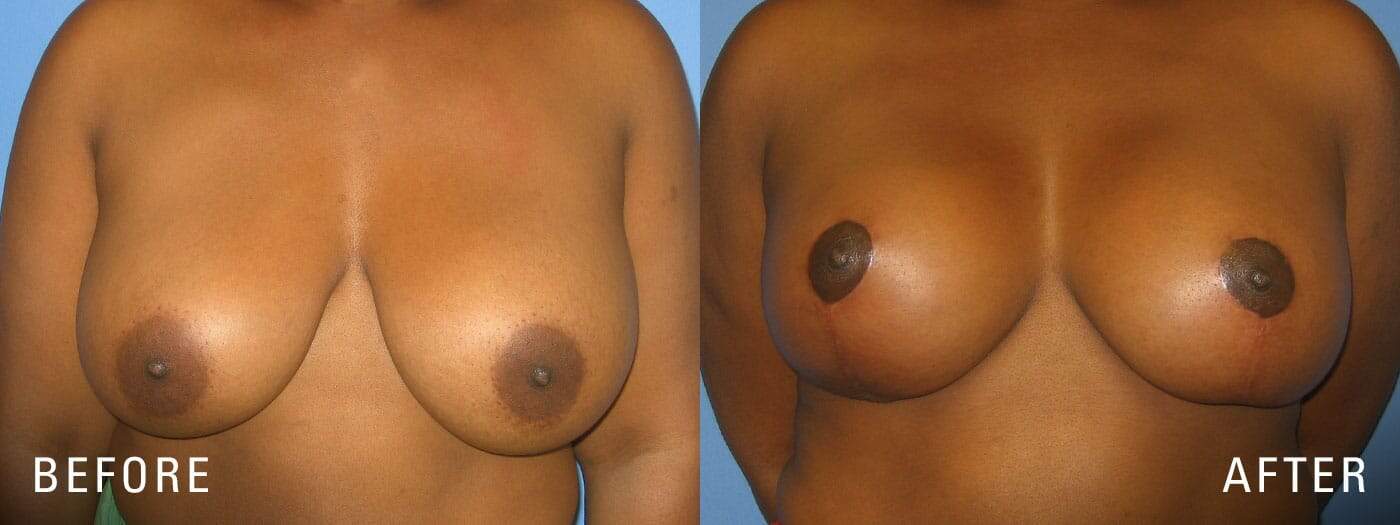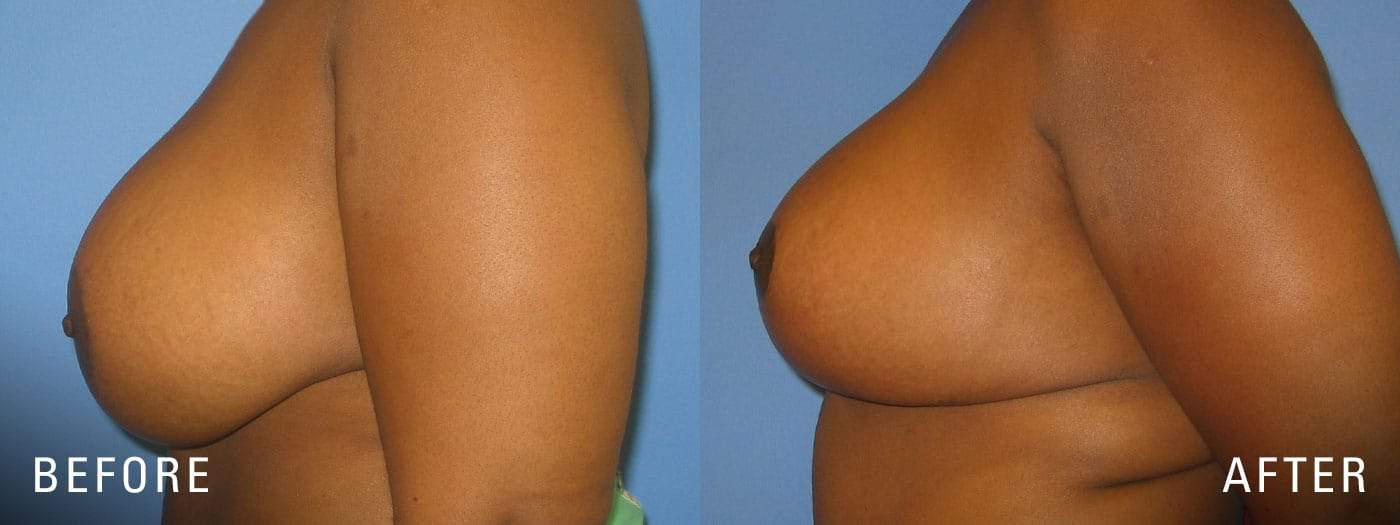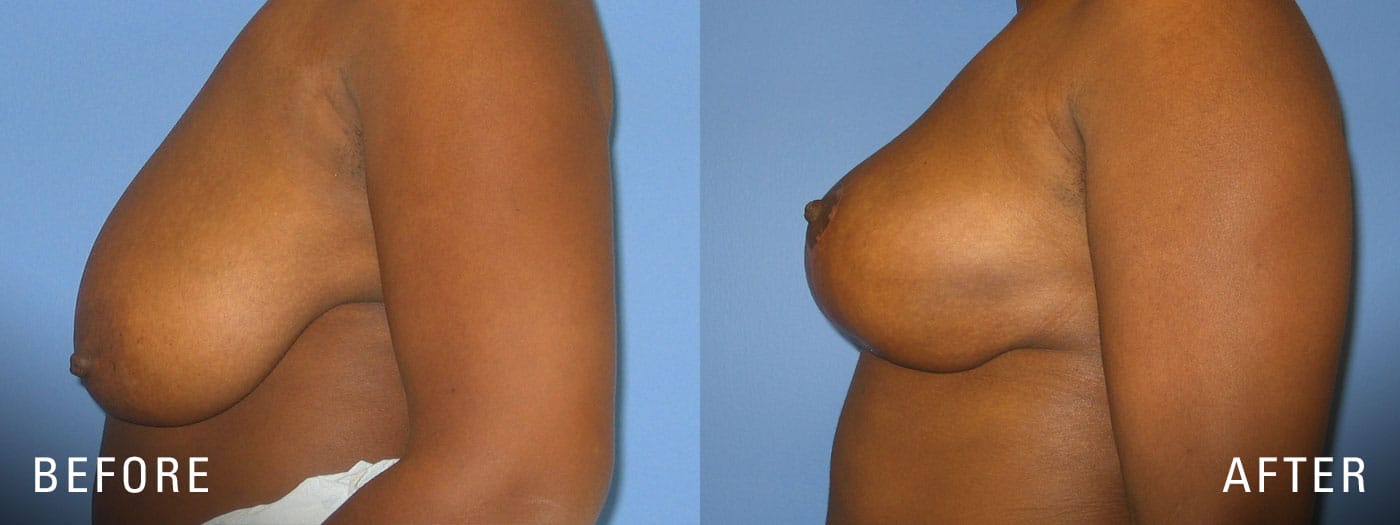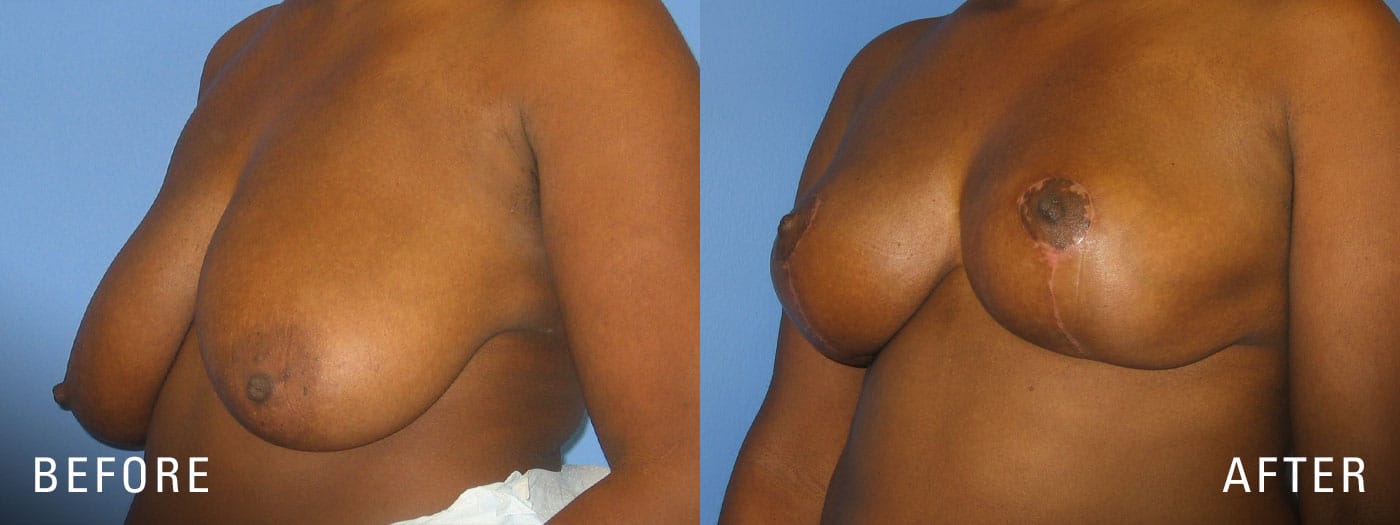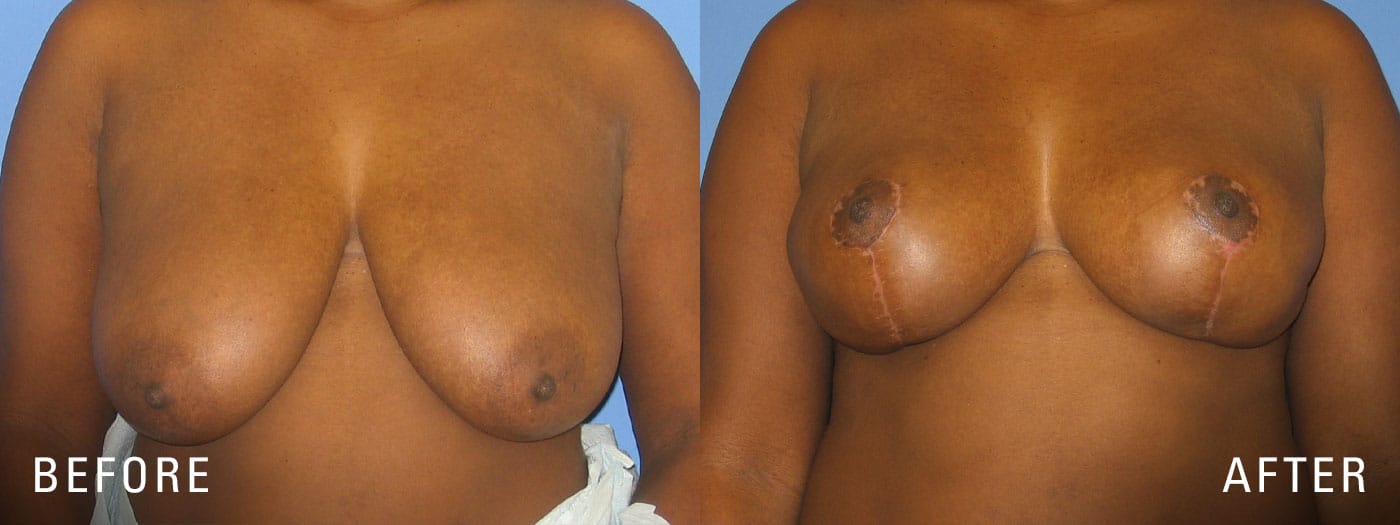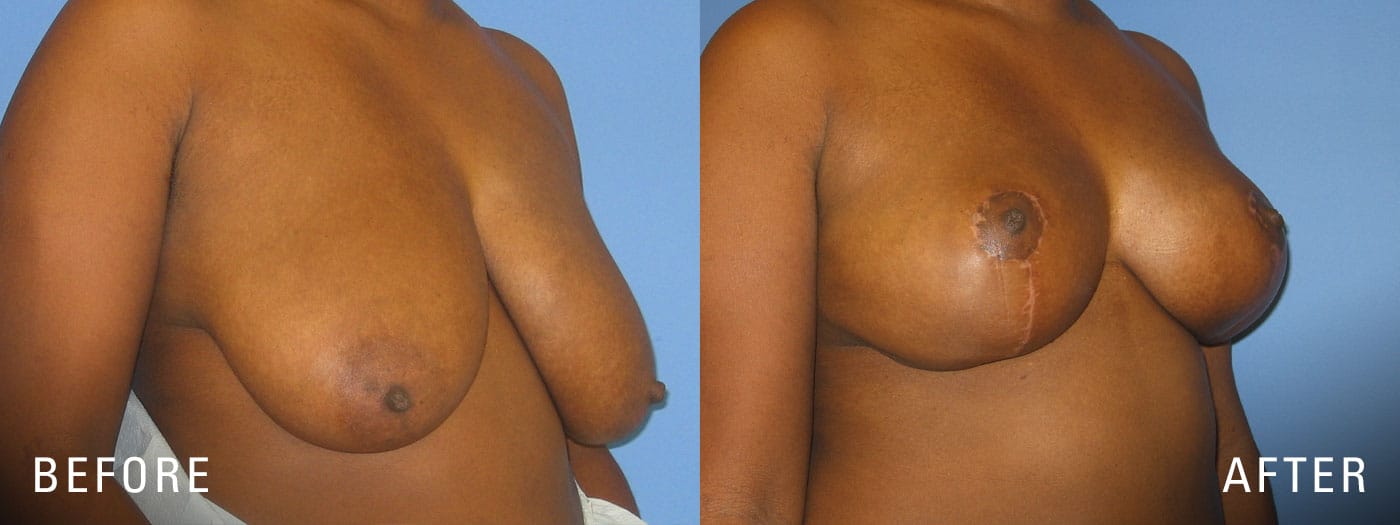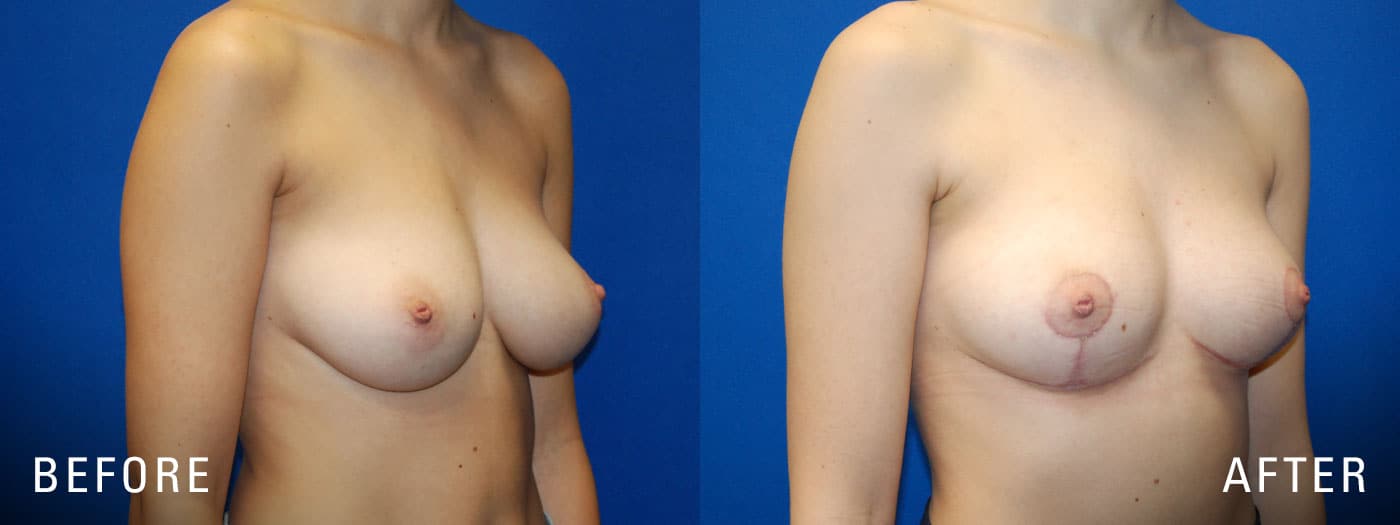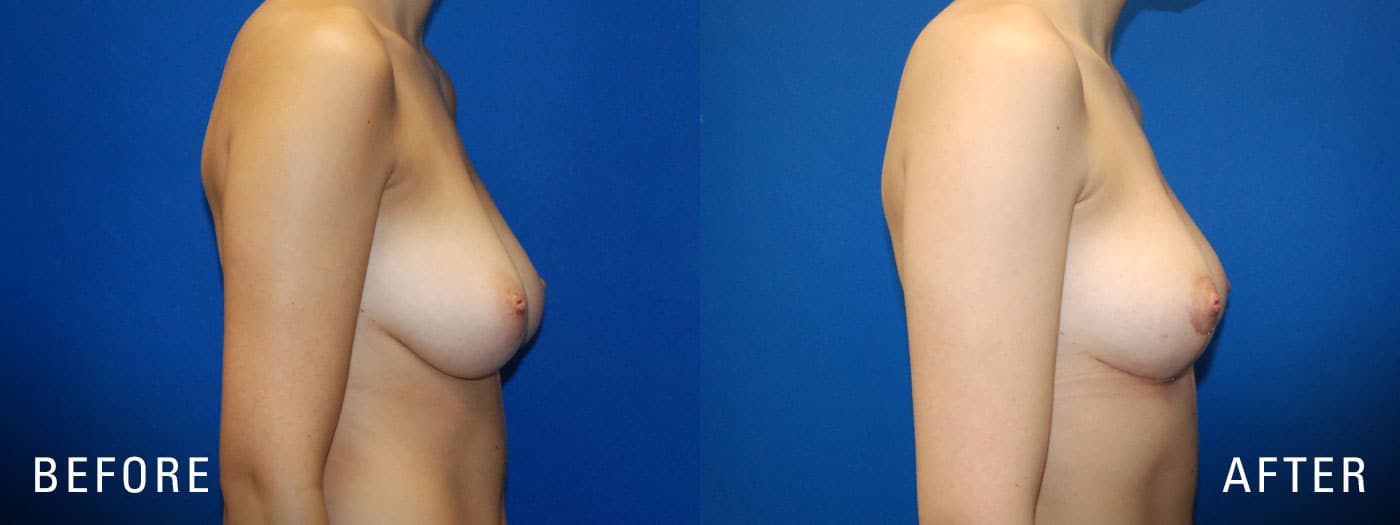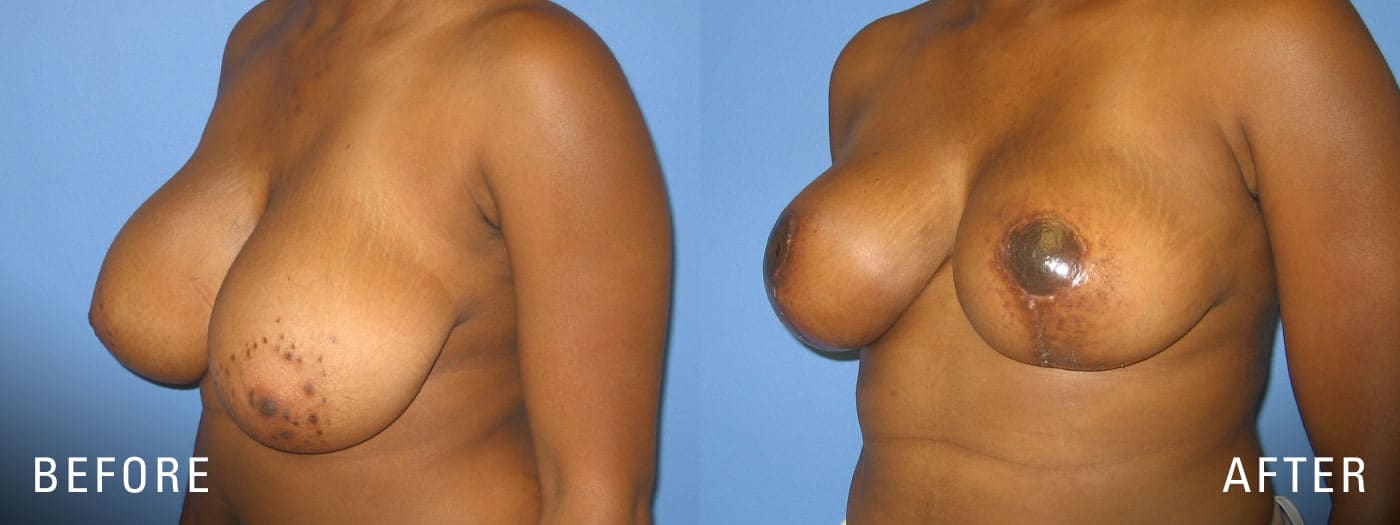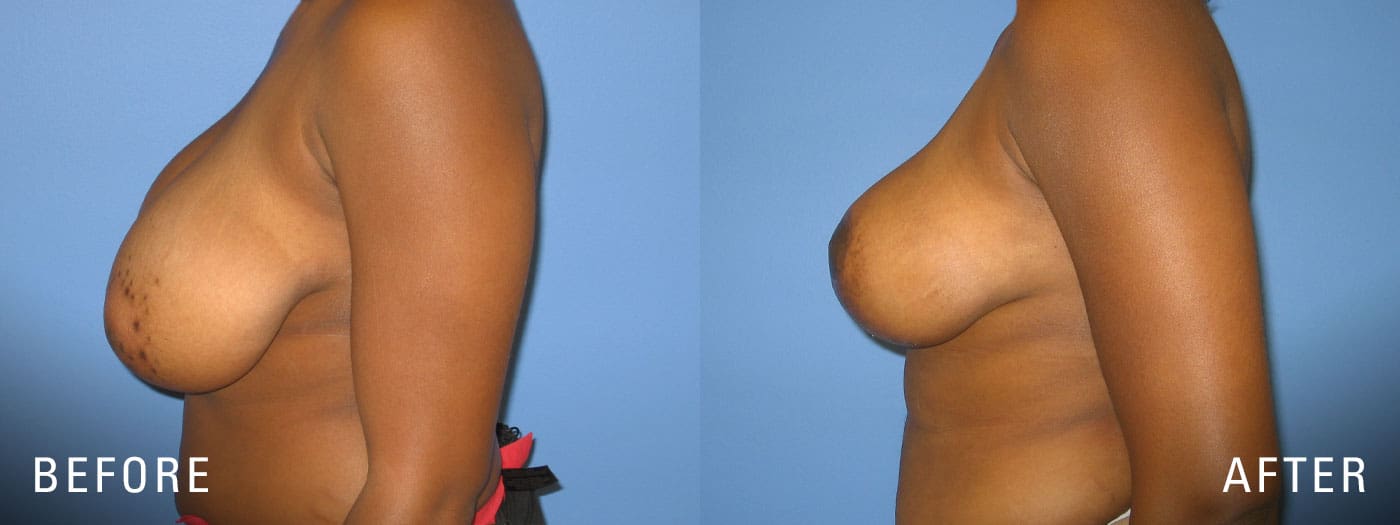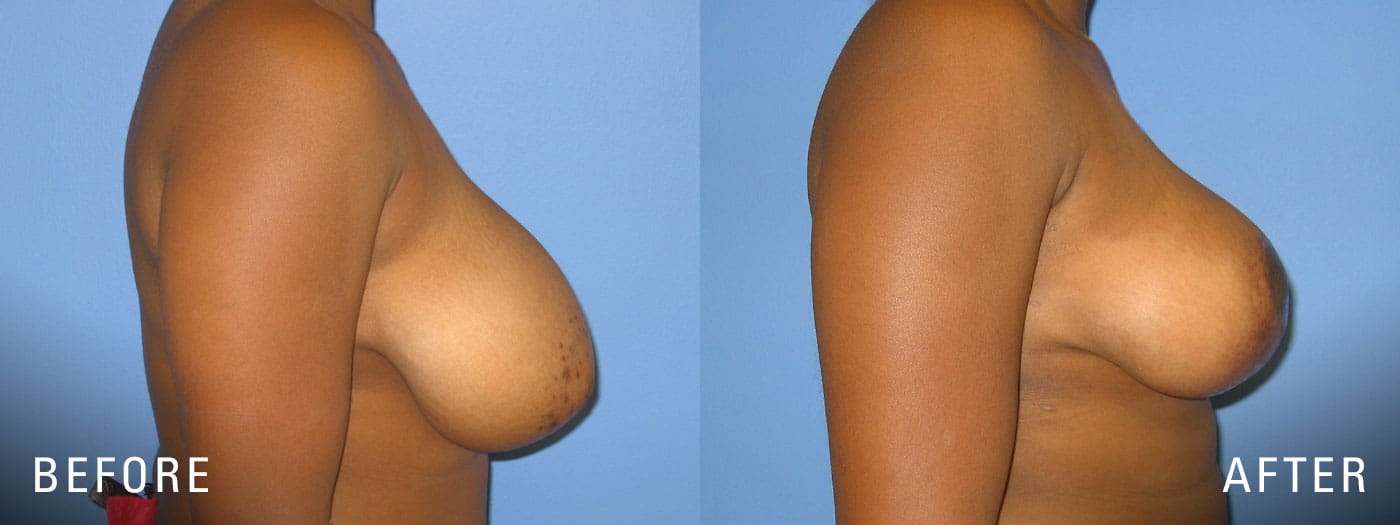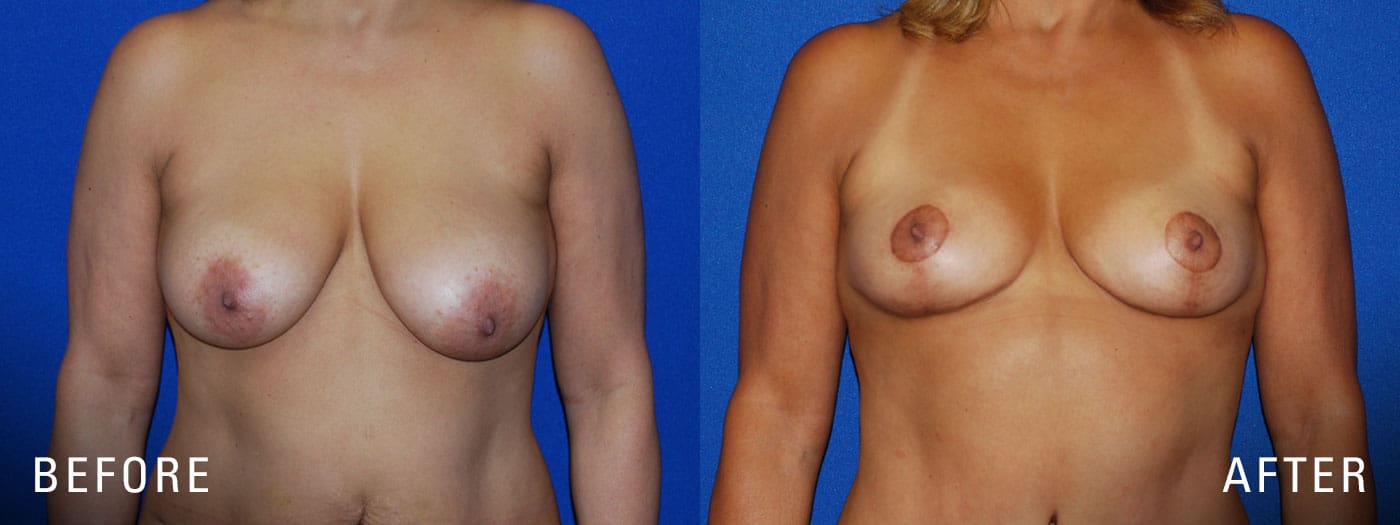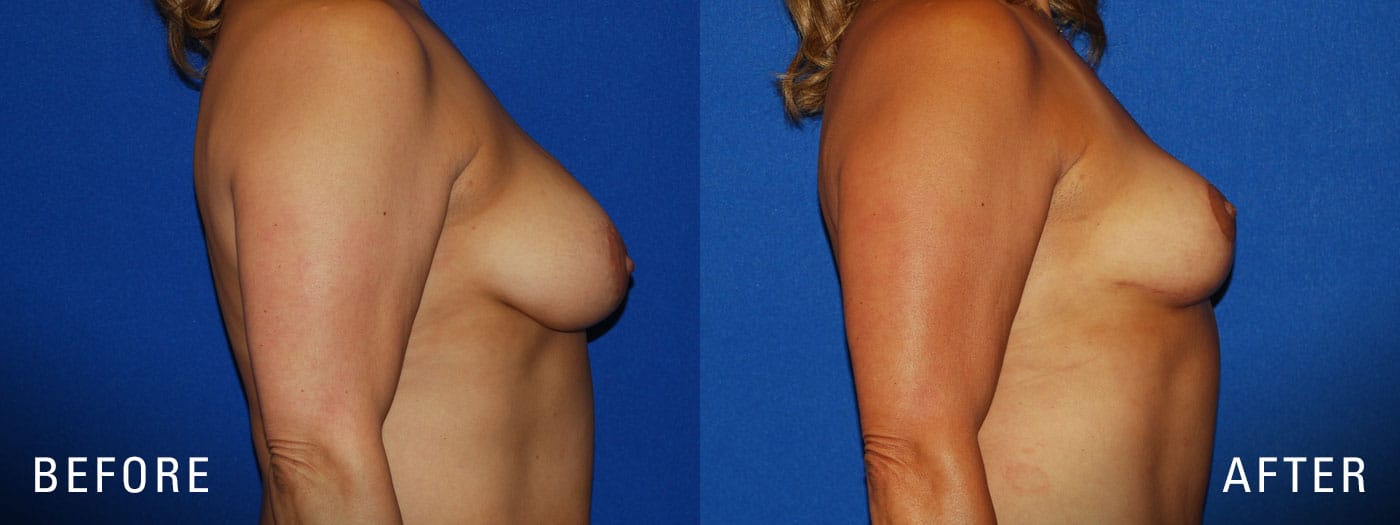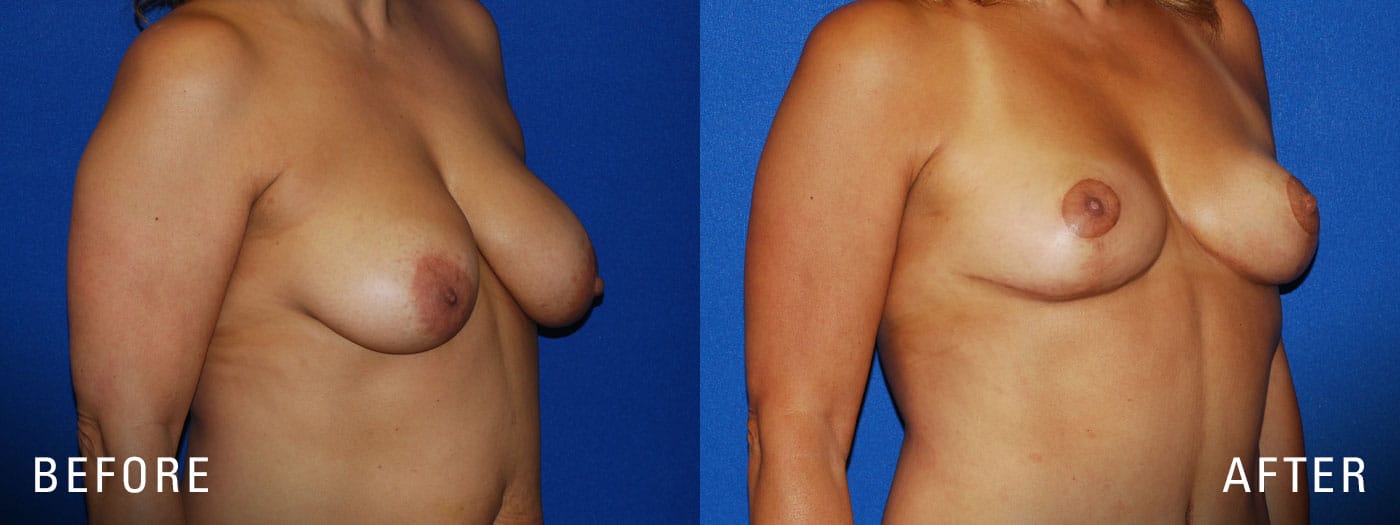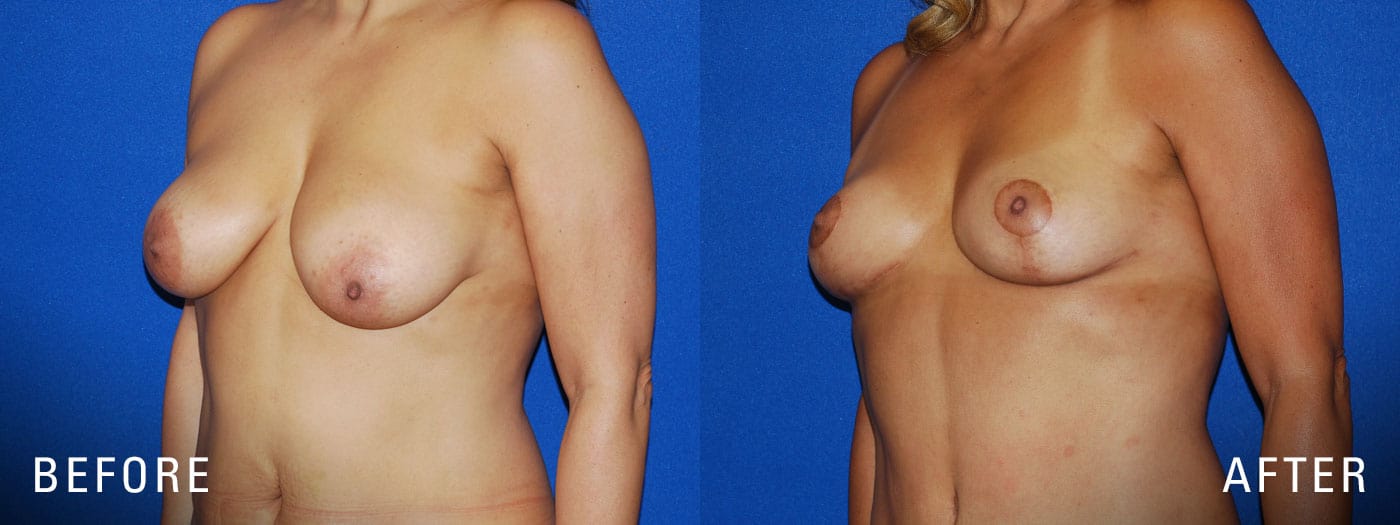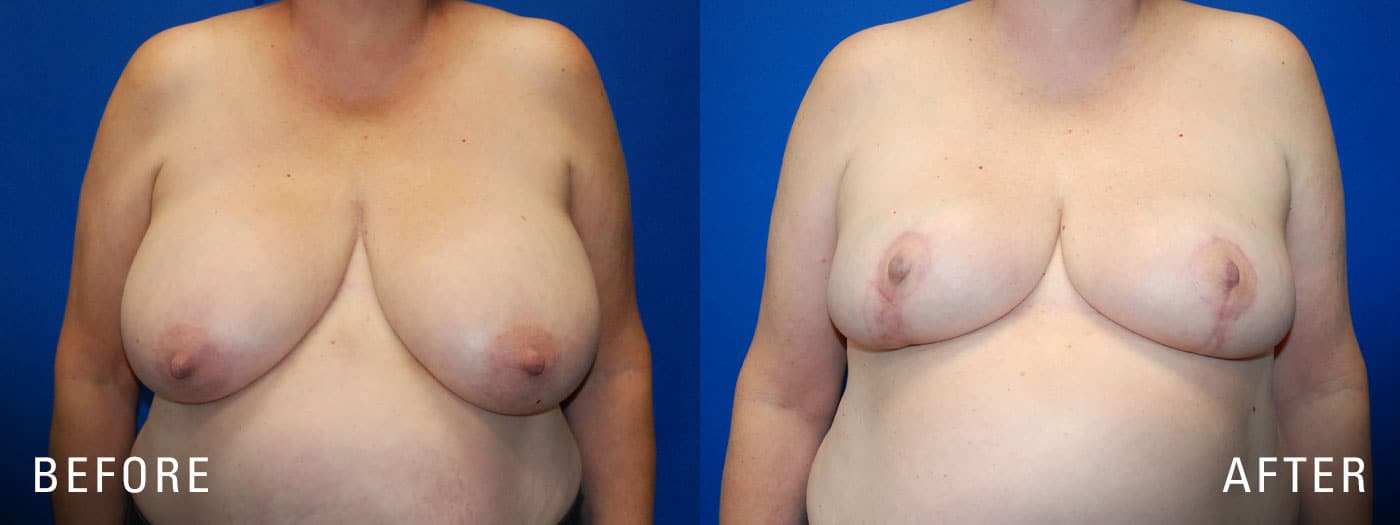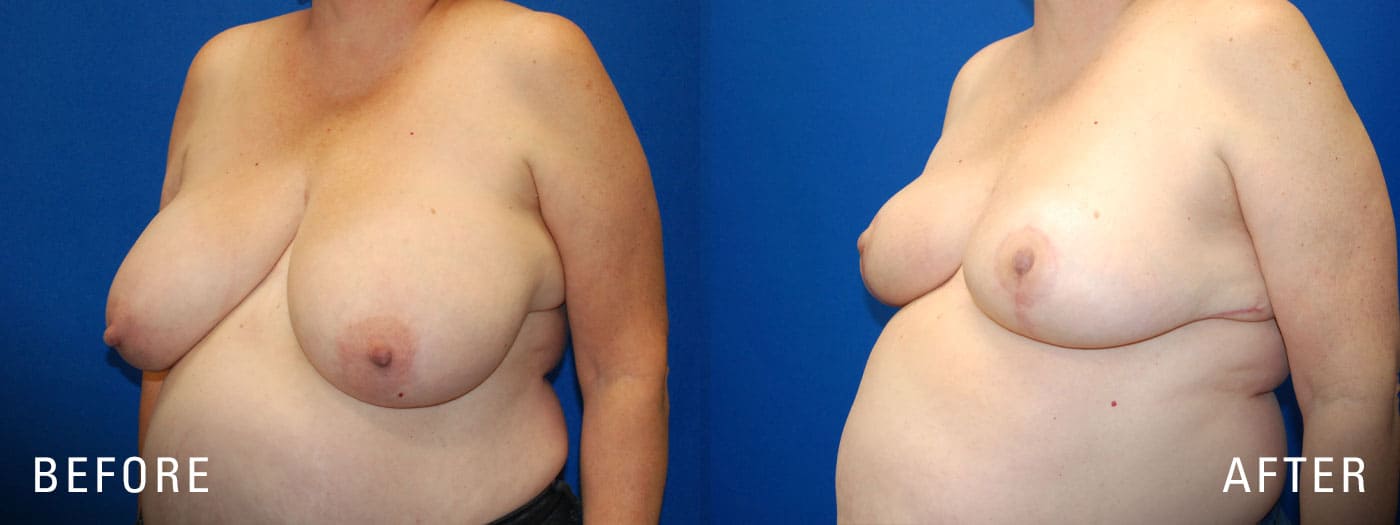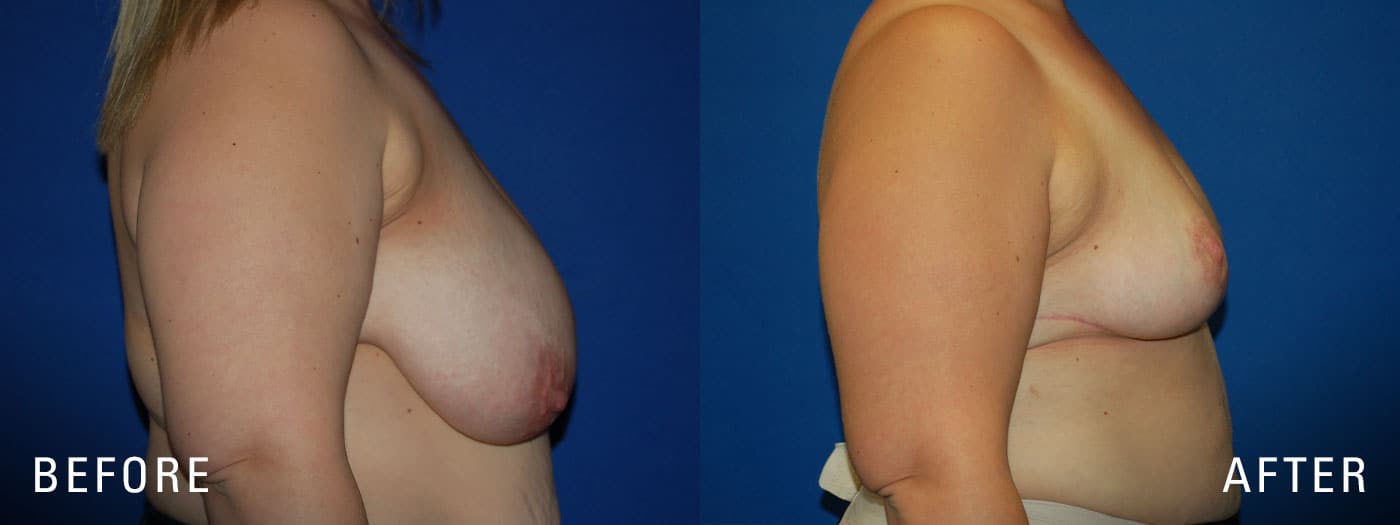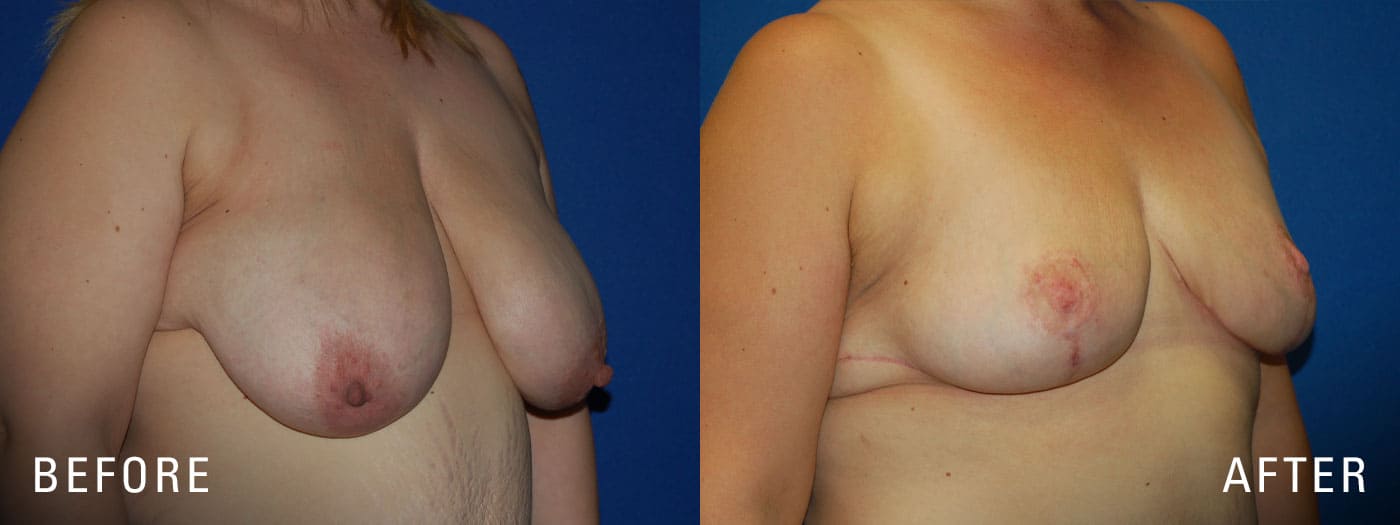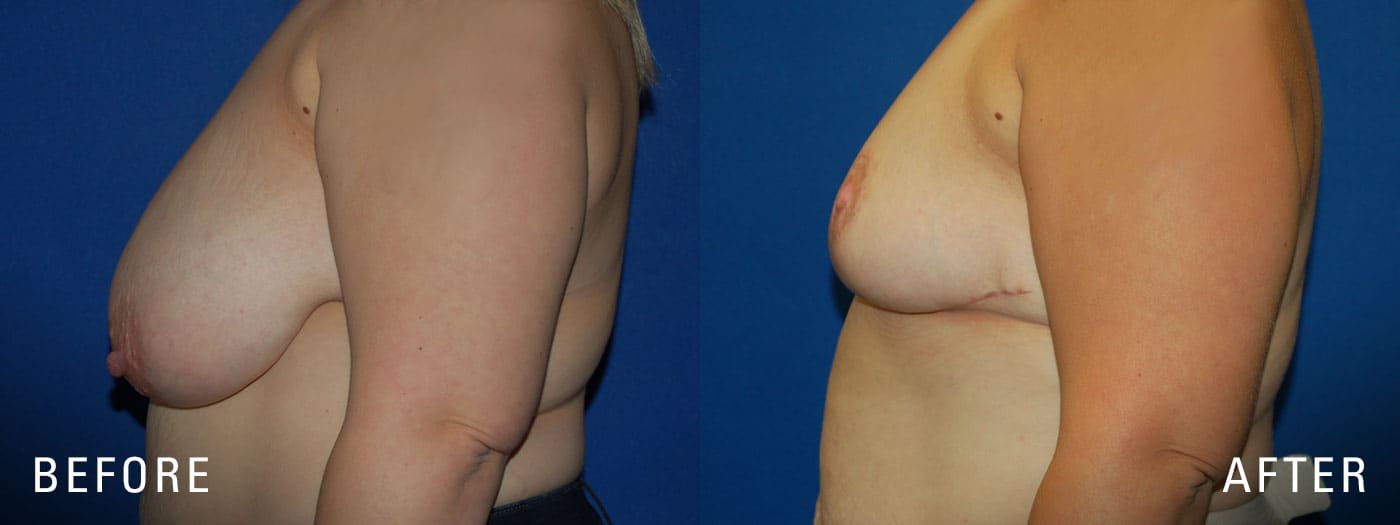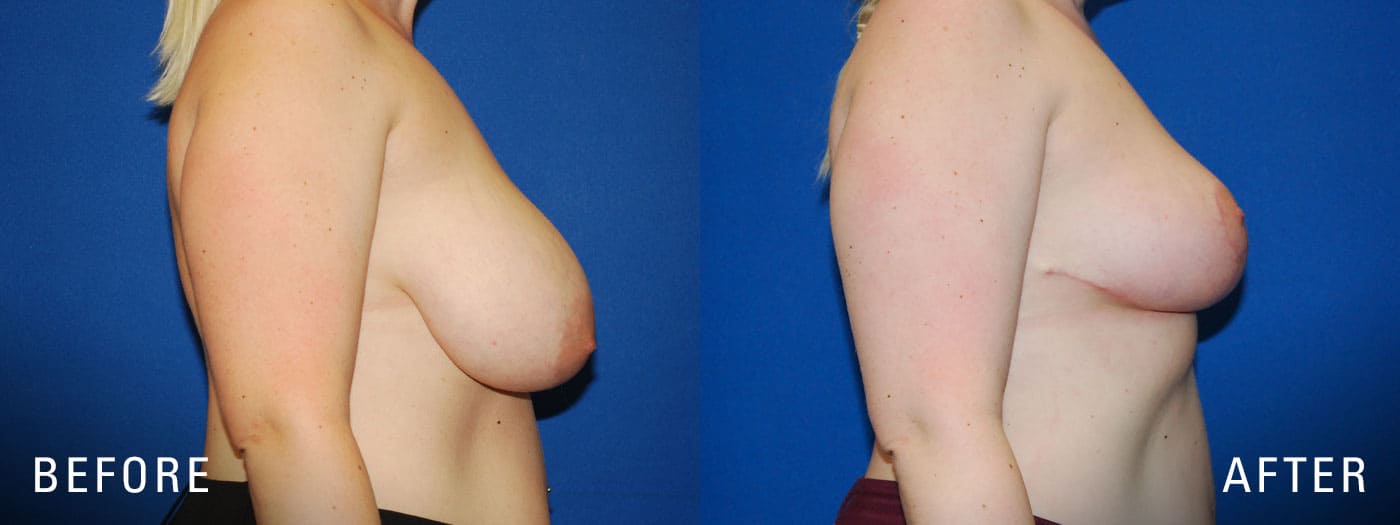Make a change for the better
Breast Reduction
You know what it’s like to live with uncomfortably large breasts – the shoulder and neck pain, the difficulty exercising, the unwelcome stares. Having breasts that are just too large for your frame affects so many parts of your life, and when you’re ready to make a change for the better, you have an exciting new option.
Breast Reduction Benefits
Breast reduction surgery can provide several benefits for women who experience discomfort or self-consciousness due to the size and weight of their breasts. Some of the key benefits of breast reduction surgery include:
- Relief from physical discomfort: Breast reduction can alleviate symptoms such as back, neck, and shoulder pain, skin irritation, and posture problems that can be caused by the weight of large breasts.
- Improved quality of life: Many women who undergo breast reduction surgery report feeling more comfortable, confident, and satisfied with their appearance after the procedure, which can improve their overall quality of life.
- Increased ability to exercise: Women with large breasts may find it difficult to exercise or participate in certain activities due to discomfort or limitations in movement. Breast reduction surgery can make it easier to engage in physical activity and lead a more active lifestyle.
- Better fitting clothing: Women with large breasts may struggle to find clothing that fits properly and feels comfortable. Breast reduction surgery can allow for a better fit and greater clothing options.
- Improved body proportions: Breast reduction can create a more balanced and proportionate appearance for women who have breasts that are disproportionately large for their body size.
Overall, breast reduction surgery can provide physical and emotional benefits that can greatly improve a woman’s quality of life.
When Should You Get a Breast Reduction Surgery?
You can have breast reduction surgery at any age, but it’s generally advisable to wait until you’re at least age 20, by which time your breasts are likely to be fully developed. However, sometimes surgery is performed in teens who suffer significant emotional and psychological effects of having too-large breasts.
Breast Reduction Information for Milwaukee and Waukesha Patients
We would like to provide some basic information regarding breast reduction. However, the best way to get specific information is to have a personal consultation with one of our board-certified plastic surgeons. Please call (414) 439-3000 for a consultation in any of our Glendale or Waukesha, Wisconsin locations.
The breast reduction procedure removes fat, glandular tissue, and skin from the breasts, making them smaller, lighter, and firmer. It can also reduce the size of the areola, the darker skin surrounding the nipple. The goal is to give the woman smaller, better-shaped breasts in proportion with the rest of her body.
To make this procedure accessible to all our patients we provide Financing options.
Call (414) 439-3000 for a cosmetic consultation.
THE BEST CANDIDATES FOR BREAST REDUCTION
Beast reduction is usually performed for physical relief rather than simply cosmetic improvement. Most who have the surgery are women with large, pendulous breasts that restrict their activities and cause them physical discomfort. In most cases, breast reduction isn’t performed until a woman’s breasts are fully developed; however it can be done earlier if large breasts are causing serious physical discomfort. The best candidates are those who are mature enough to fully understand the procedure and have realistic expectations about the results.
Some insurance companies will pay for breast reduction if it’s medically necessary, however, they may require that a certain amount of breast tissue is removed.
THE BREAST REDUCTION CONSULTATION
A personal consultation is the first step for every patient considering breast reduction. During this meeting one of our board-certified plastic surgeons will assess your physical and emotional health and discuss your specific goals for surgery. During the consultation the doctor will examine your breasts and describe the procedure in detail, and discuss and risks or limitations.
PREPARING FOR YOUR BREAST REDUCTION SURGERY
- Avoiding certain medications that may complicate surgery or recovery. Such as Aspirin, and Aspirin type products, Vitamin E and Gingko.
- Stopping smoking for a period of time (6 weeks) before and after surgery
- Arranging for help and special care following surgery
BREAST REDUCTION SURGERY
Techniques for breast reduction vary, but the most common procedure involves an anchor-shaped incision that circles the areola, extends downward, and follows the natural curve of the crease beneath the breast. The surgeon removes excess glandular tissue, fat, and skin, and moves the nipple and areola into their new position. Stitches are usually located around the areola, in a vertical line extending downward, and along the lower crease of the breast. Most often these stitches are dissolvable and under the skin. Oftentimes, a drain is placed in each breast. You will be given instructions on how to care for your drains and record the output. The drains will be removed by our staff in our office during a post-operative visit.
AFTER BREAST REDUCTION SURGERY
You may experience random, shooting pains for a few months. You can expect some loss of feeling in your nipples and breast skin caused by swelling after surgery. This usually diminishes over the next six months or so. In some patients, however, it may last a year or more.
GETTING BACK TO NORMAL
Although you may be up and about, your breasts may ache occasionally for a couple of weeks. You should avoid physical activity like lifting or pushing anything heavy for three or four weeks. We will give you detailed instructions for resuming your normal activities. Most women can return to work (if it’s not too strenuous) and social activities in about two weeks. But you’ll have much less stamina for several weeks, and should limit your exercises to stretching, bending, and swimming until your energy level returns.
YOUR NEW LOOK
Although much of the swelling and bruising will disappear in the first few weeks, it may be six months to a year before your breasts settle into their new shape. Even then, their shape may fluctuate in response to your hormonal shifts, weight changes, and pregnancy. Your surgeon will make every effort to make your scars as inconspicuous as possible. Still, it’s important to remember that breast reduction scars are permanent.
Of all plastic surgery procedures, breast reduction results in the quickest body-image changes. You’ll be rid of the physical discomfort of large breasts, your body will look better proportioned, and clothes will fit you better.
ALL SURGERIES CARRY SOME UNCERTAINTIES AND RISK
Get in Touch
With board-certified plastic surgeons, two state certified surgical operating rooms, an anesthesiologist, and a team of specialized, credentialed nurses Illume provides ready availability for whatever cosmetic service or surgery you need. Let us help you Live Life Beautifully!
Call or text: 414-439-3000























